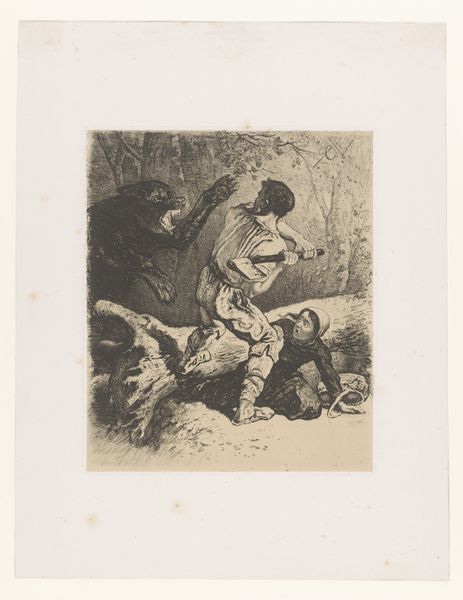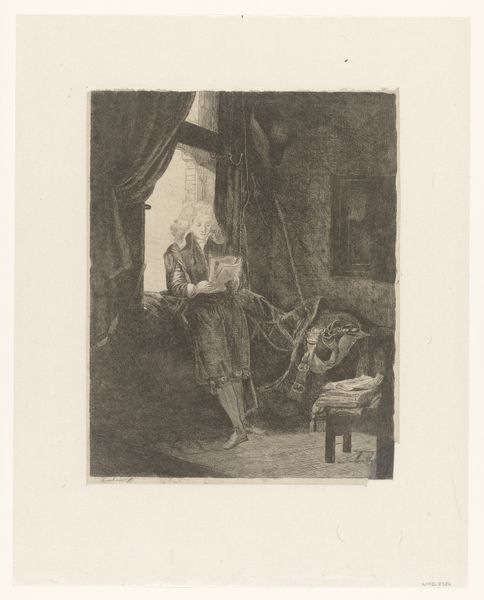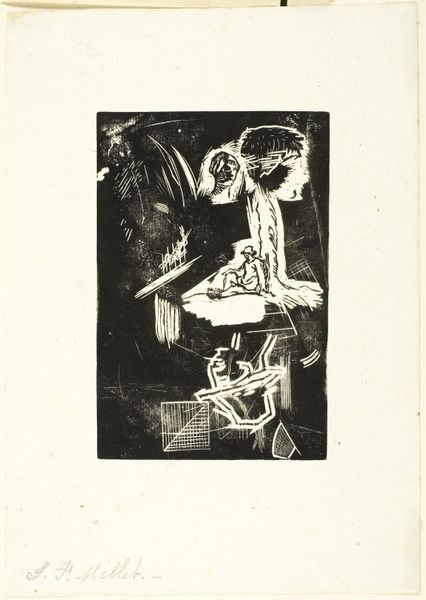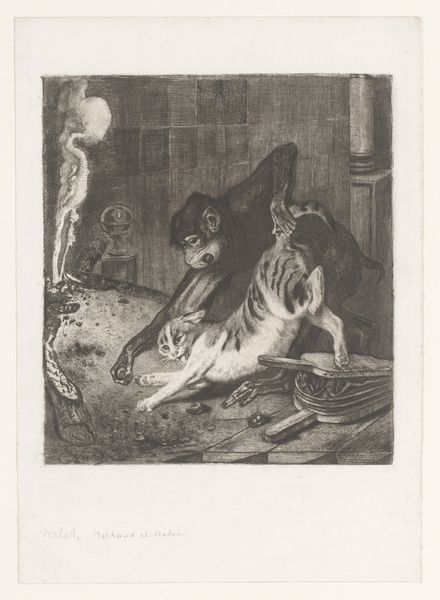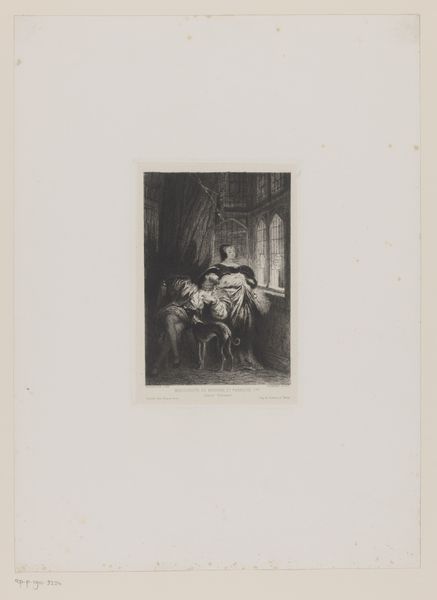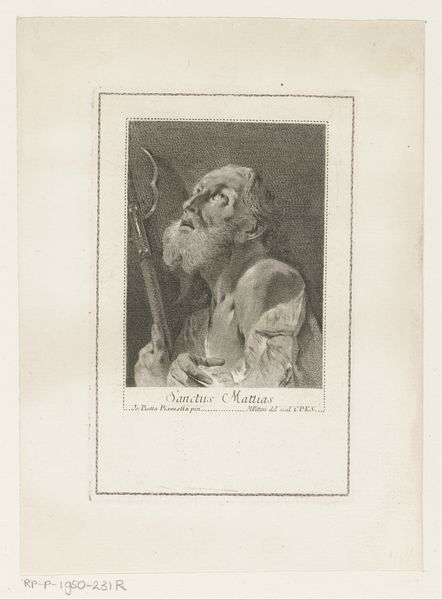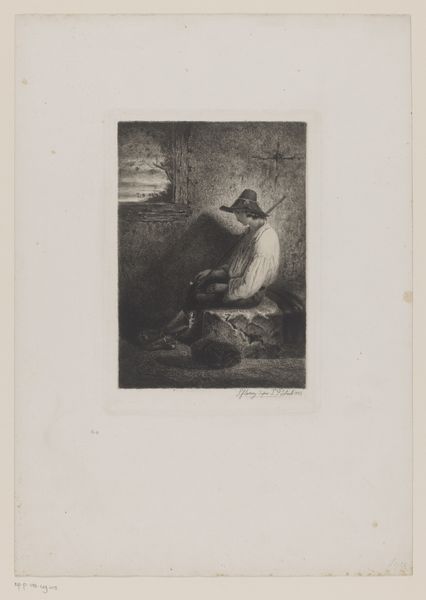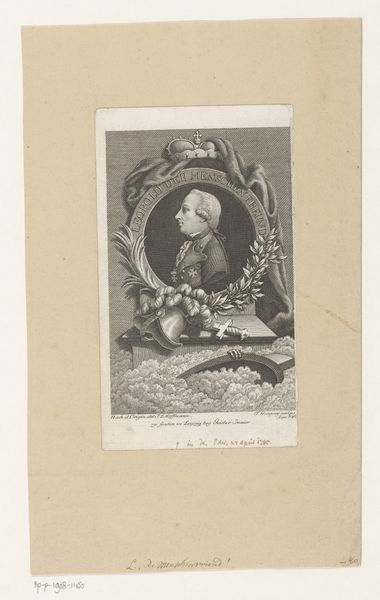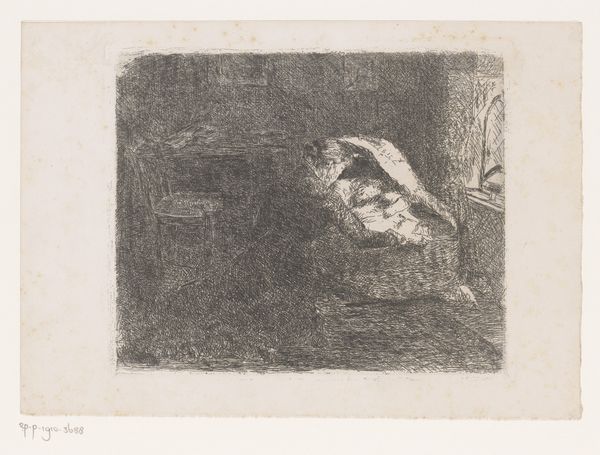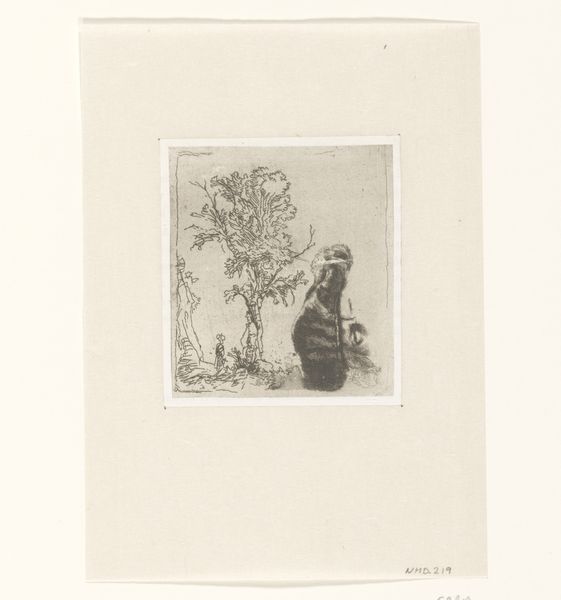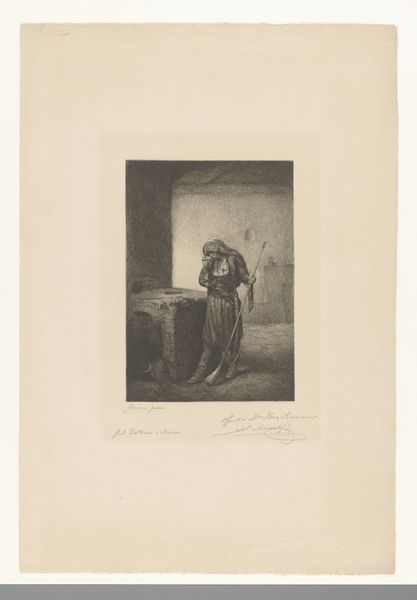
Dimensions: height 180 mm, width 124 mm
Copyright: Rijks Museum: Open Domain
Editor: This is Felicien Rops’ "Vrouw van Smetse Smee op een stoel in de keuken," from 1858, an etching on paper. The subdued tones create a somber mood. What underlying social commentaries might Rops be expressing through this image? Curator: That’s an excellent question! Given Rops's interest in social realism, this piece becomes more than just a genre painting. We need to consider the position of women, especially working-class women, in 19th-century society. Look at the woman’s posture: her head is bowed, almost in submission, and she is toiling in a humble setting. Do you think that this choice romanticizes her toil or reveals her socio-economic hardships? Editor: I think it reveals hardship. She appears isolated and burdened by her labor. The headscarf, obscuring her face, contributes to a sense of anonymity and perhaps a loss of identity within her domestic role. Curator: Exactly! The way Rops uses light and shadow intensifies this. The single candle casts long shadows, underscoring the dreariness of her reality. Could the dim light also symbolize the limited opportunities available to women of her social standing? Editor: That makes perfect sense! It’s not just about portraying a scene; it’s about critiquing the societal forces that shape this woman's existence and confines her potential. Curator: Precisely! Understanding art as a tool for social commentary enriches our experience and reveals historical perspectives often overlooked. Editor: I've never thought about portraiture that way, particularly with prints. I’ll definitely carry this perspective moving forward.
Comments
No comments
Be the first to comment and join the conversation on the ultimate creative platform.
